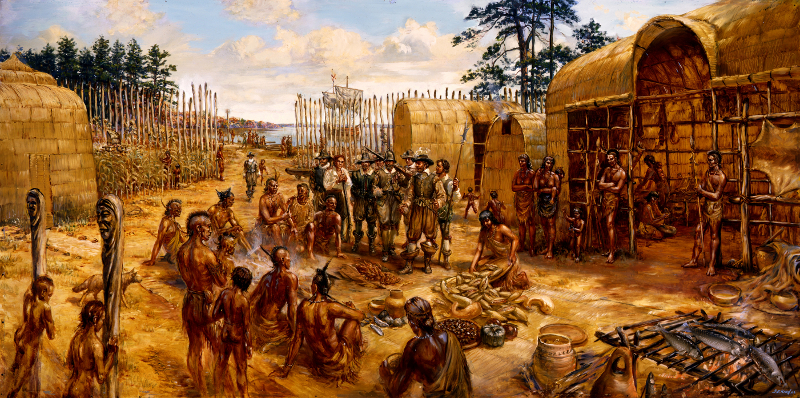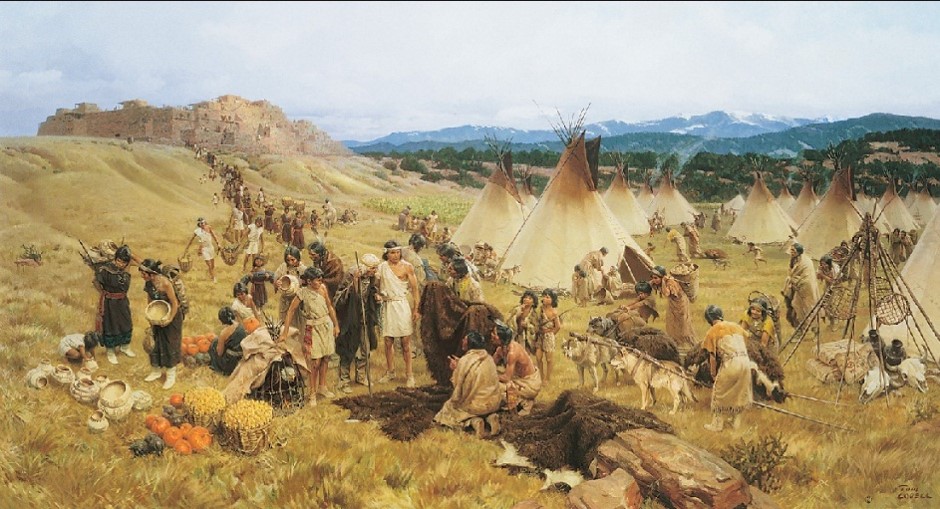Survival’s Debt: The Indispensable Native American Contributions to Colonial America
The narrative of early American colonization often paints a picture of rugged European pioneers, self-sufficient and determined, conquering a vast wilderness through sheer force of will and ingenuity. While undeniably resilient, this popular portrayal frequently overlooks – and often actively obscures – a monumental truth: the survival of these nascent colonial settlements, particularly in their precarious initial decades, was profoundly and indispensably dependent on the knowledge, resources, and often the direct intervention of the Native American peoples whose lands they sought to claim. Far from being passive obstacles, Indigenous populations were, in countless ways, the unsung architects of colonial survival, providing the very blueprints for existence in a challenging new world.
From the first faltering steps at Jamestown in 1607 to the establishment of the Plymouth Colony in 1620 and beyond, European newcomers arrived woefully unprepared for the environmental realities of North America. Their agricultural practices were unsuited, their understanding of local flora and fauna minimal, and their susceptibility to unfamiliar diseases high. It was into this crucible of vulnerability that Native American wisdom and generosity, albeit often exploited, poured a lifeline without which many colonial dreams would have simply withered and died.
Perhaps the most fundamental contribution lay in food and agriculture. The Europeans brought wheat and barley, crops ill-suited to much of the North American climate. They starved, famously and repeatedly. The "Starving Time" at Jamestown, for instance, saw the colony’s population dwindle from hundreds to a mere handful, with desperate colonists resorting to cannibalism. Their salvation came in the form of maize (corn), beans, and squash – the "Three Sisters" – cultivated by Native Americans for millennia. Indigenous agricultural techniques, including crop rotation, companion planting, and the use of fish as fertilizer, were revolutionary to the Europeans.
The iconic story of Tisquantum, or Squanto, of the Patuxet tribe, who acted as an interpreter and guide for the Plymouth colonists, is a testament to this agricultural lifeline. Having learned English after being kidnapped and taken to Europe, Squanto returned to find his tribe decimated by disease. Yet, he chose to aid the struggling Pilgrims, teaching them how to plant native crops, identify edible plants, hunt local game, and fish for eels. As William Bradford, governor of Plymouth, recorded in Of Plimoth Plantation, Squanto "was a special instrument sent of God for their good beyond their expectation… He directed them how to set their corn, where to take fish, and to procure other commodities, and was also their pilot to bring them to unknown places for their profit." Without this transfer of knowledge, the Pilgrim experiment would almost certainly have failed, just as many others had.
Beyond staple crops, Native Americans introduced colonists to a vast pharmacopeia of medicinal plants and herbal remedies. European medical practices, often primitive and based on theories like humoral balance, frequently exacerbated ailments. Indigenous healers, however, possessed an intimate understanding of the therapeutic properties of local plants, developed over generations of empirical observation. They used sassafras for fever, willow bark (containing salicylic acid, the precursor to aspirin) for pain, witch hazel for inflammation, and various poultices and decoctions for everything from snakebites to dysentery. While direct records of colonists adopting complex Native medical practices are sparse due to cultural biases, it is undeniable that they benefited from these plants, often learning their uses from Native traders or healers. The sheer survival rate, once diseases like scurvy and dysentery became less lethal, points to an improved diet and access to local remedies.

Technological innovations were another critical pillar of support. The Europeans arrived with ships designed for ocean travel, but useless for navigating the intricate network of rivers and lakes that crisscrossed the continent. Native Americans provided the solution: the birchbark canoe. Lightweight, durable, and maneuverable, the canoe was the ultimate vehicle for exploration, trade, and transportation in the interior. Similarly, snowshoes and toboggans, Indigenous inventions, were essential for winter travel and hunting, allowing colonists to move across deep snow that would have otherwise rendered them immobile and isolated. Native housing designs, like wigwams and longhouses, though not widely adopted by colonists for permanent structures, offered valuable insights into efficient, adaptable shelter in the local environment, particularly for temporary settlements or during initial construction phases. Even the clothing styles, such as moccasins and deerskin garments, proved superior to European woolens and leather for comfort and practicality in the North American climate.
The expertise of Native Americans in survival skills and environmental adaptation was unparalleled. They understood the seasonal cycles, the habits of local wildlife, and the most efficient ways to hunt, fish, and gather. Colonists, initially attempting to hunt with methods learned in Europe, often found themselves empty-handed. Native hunters taught them how to track game, set traps, and utilize the entire animal. This knowledge was not merely about sustenance; it was about navigating a complex ecosystem that could be both bountiful and brutal. Without Native guides and teachers, many colonial forays into the interior would have been disastrous, and the ability to expand beyond coastal enclaves severely limited.
Trade and economic exchange also played a crucial role. While often exploitative and eventually leading to conflict, early trade relationships were vital for both sides. Native Americans provided valuable furs (beaver, otter, deer), which fueled the lucrative European fashion industry and provided capital for the struggling colonies. In return, colonists offered manufactured goods like metal tools, cloth, and firearms. This exchange, initially based on mutual need, slowly shifted as European demand for land and resources grew, and Native populations suffered from disease and warfare. However, in the nascent stages, it represented a symbiotic, if unequal, relationship that kept many colonial economies afloat.
Finally, the intricate political structures and military alliances of Native American nations significantly influenced colonial survival and expansion. European powers, constantly vying for dominance, frequently sought alliances with various Indigenous groups to gain an advantage over their rivals. The Iroquois Confederacy, a powerful and sophisticated political entity, played a pivotal role in shaping the balance of power in the Northeast, aligning at different times with the British or the French, and significantly impacting colonial military strategies and territorial claims. While these alliances often dragged Native nations into European conflicts, they also demonstrated the immense political and military force Indigenous peoples wielded, forcing colonial powers to engage in diplomacy and strategic negotiation rather than simple conquest. Some historians even argue that the sophisticated democratic principles of the Iroquois Confederacy, particularly its Great Law of Peace, offered an early model of federalism that may have subtly influenced the framers of the U.S. Constitution, though this remains a subject of academic debate.
It is crucial to acknowledge that this indispensable aid often came at a devastating cost to Native Americans. The generosity and knowledge shared by Indigenous peoples were frequently met with betrayal, land dispossession, disease, and violence. The very survival of the colonies, facilitated by Native expertise, ultimately enabled the expansion that led to the decimation of Native populations and cultures. The story of colonial survival, therefore, is not merely one of European fortitude, but also one of Indigenous resilience, generosity, and tragic sacrifice.
In conclusion, to truly understand the origins of the United States and the trajectory of its early colonial period, one must move beyond the simplistic narratives of conquest and self-reliance. The fact is, the first European settlements in North America were fragile, vulnerable experiments that would likely have failed without the direct and indirect contributions of Native American peoples. From the food on their tables and the remedies for their ailments to the technologies that enabled their mobility and the political landscape that shaped their alliances, Indigenous knowledge and resources were the unseen pillars supporting the colonial enterprise. Recognizing this profound historical debt is not just about correcting the record; it is about acknowledging the foundational truth that the very survival and subsequent development of colonial America were built upon a complex, often tragic, but undeniably vital exchange with the continent’s original inhabitants. Their contributions were not merely incidental; they were the essential keys to unlocking a new world.



